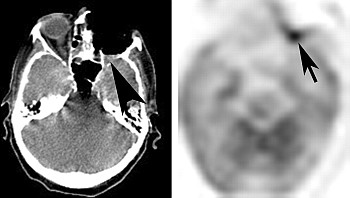
Saeed Fakhran
Carcinoma of the squamous lining of the mucosal surfaces of the head and neck, collectively known as head and neck cancer, accounts for over 50,000 cases per year and represents approximately 3% of all cancers in the United States. Traditionally, head and neck cancer was thought to be a disease of older people (males greater than females) with a history of alcohol and tobacco abuse. With recent increasing awareness of the risks of oral HPV infection, there is growing concern and realization that head and neck cancer is no longer a disease of the elderly.
Since its widespread introduction in 2001, the hybrid technique of PET/CT imaging has gained an ever increasing foothold in oncologic imaging. It is now widely used in the initial diagnosis, staging, assessment of therapy response, and long-term surveillance of a wide array of tumors throughout the body. Predictably, PET/CT has also gained traction as the dominant modality used to diagnose, treat, and monitor therapy response in head and neck squamous cell carcinoma. It goes without saying that a basic familiarity with PET imaging, artifacts, and expected normal findings within both the neck and the rest of the body is required to provide a clinically meaningful interpretation.
There still exists significant between-institution variability in both the protocols of PET/CT studies (with or without intravenous contrast, with low-dose CT technique or a diagnostic quality CT) and the frequency of surveillance of PET/CT studies in the management of head and neck cancer. As of now, no evidence-based recommendations in these areas exist.
